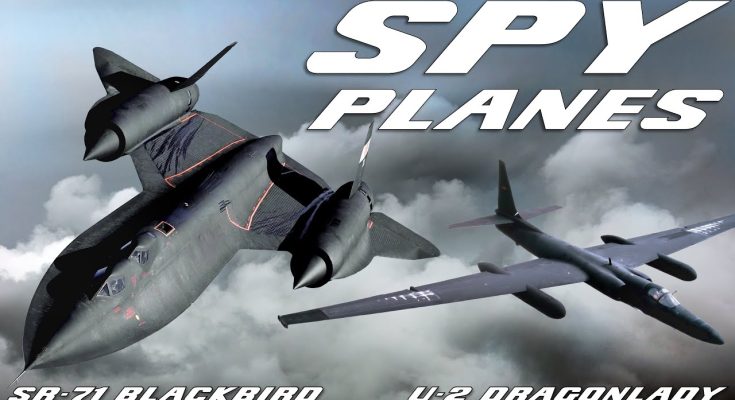The SR-71 Blackbird and the U-2 Dragon Lady are two of the most iconic aircraft ever designed, both crafted by Lockheed’s Skunk Works division, renowned for producing groundbreaking military technology. These spy planes, though vastly different in design and capabilities, share a common purpose: to gather intelligence and provide strategic advantage through unparalleled reconnaissance. The combination of speed, altitude, and stealth in these aircraft made them formidable tools during the Cold War and continues to influence modern military aviation.
The SR-71 Blackbird stands as a testament to engineering brilliance and is widely regarded as one of the most remarkable aircraft ever built. Developed in the 1960s under the direction of Clarence “Kelly” Johnson, the SR-71 was designed to fly at extraordinary speeds and altitudes, making it virtually untouchable by enemy air defenses. With its sleek, black design and titanium frame, the SR-71 could reach speeds exceeding Mach 3 (around 2,200 mph), allowing it to outrun surface-to-air missiles and enemy fighter jets. Its operating altitude was equally impressive, capable of flying at altitudes above 85,000 feet, well above the reach of most interceptors.
The Blackbird’s primary mission was high-altitude reconnaissance, and it was equipped with cutting-edge sensors and cameras capable of capturing detailed imagery of enemy territory. Its reconnaissance systems were so advanced that they could take high-resolution photographs from space-like altitudes, providing invaluable intelligence to U.S. military and intelligence agencies. What set the SR-71 apart from its predecessors was its speed and agility; its ability to outrun any threat allowed it to penetrate deep into enemy territory without being intercepted. Despite its stealthy design, it wasn’t built to be invisible to radar but was rather optimized for speed, making it one of the most audacious technological feats of the 20th century. The Blackbird was retired in the 1990s, not due to its ineffectiveness, but because of the emergence of satellite technology and advancements in UAVs (Unmanned Aerial Vehicles).
The U-2 Dragon Lady is the other masterpiece of Lockheed’s Skunk Works. Unlike the SR-71’s speed and stealth, the U-2 was designed for high-altitude reconnaissance with an emphasis on endurance and precise intelligence gathering. First flown in 1955, the U-2 was intended for surveillance missions over Soviet territory during the height of the Cold War. Its ability to fly at altitudes over 70,000 feet, above the range of most enemy interceptors, allowed it to gather strategic intelligence for many years.
The U-2’s design is more conventional compared to the SR-71, featuring long, slender wings to provide the necessary lift at high altitudes. Equipped with sophisticated cameras and sensors, the U-2 was capable of gathering high-resolution imagery of enemy installations, troop movements, and other critical targets. The U-2 also played a key role during the Cuban Missile Crisis, providing the U.S. government with crucial intelligence that led to the discovery of Soviet missiles in Cuba. Even after decades of service, the U-2 continues to be used for intelligence missions, having been upgraded with modern avionics and sensor systems to keep pace with evolving threats.
What makes both the SR-71 and the U-2 significant in the history of military aviation is the role they played in shaping U.S. reconnaissance and intelligence strategies. The U-2 was the first aircraft to provide consistent, high-altitude reconnaissance, while the SR-71 pushed the boundaries of what was thought possible, setting records that remain unchallenged to this day. Both aircraft allowed the U.S. to gather intelligence in ways that no satellite or other aircraft could at the time, cementing their place in history as technological masterpieces.
In conclusion, the SR-71 Blackbird and the U-2 Dragon Lady are two of the most influential and successful reconnaissance aircraft ever built. Designed and produced by Skunk Works, these aircraft showcased the innovation and vision of engineers who created tools that changed the landscape of military intelligence forever. Their legacy endures, not just for their remarkable technical capabilities, but also for the way they reshaped the U.S. military’s approach to surveillance and reconnaissance during the Cold War and beyond.



